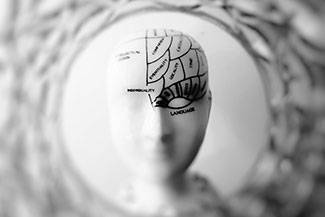
Common Headaches And Migraines | How A Neuro-Optometrist Can Help
Pinpointing the cause of a headache can be difficult because headaches are a symptom of a multitude of conditions, rather than a disease itself. What many don’t know is that headaches can actually be rooted in visual dysfunction, especially following a traumatic brain injury (TBI) or stroke. And while migraines are a more severe form of headache, they too can be related to visual dysfunction. If you suffer from sporadic headaches or migraines, make an appointment with Dr. Wylie to rule out visual dysfunction as the cause or contributing factor.
Common Headaches Vs. Migraines: What’s The Difference?
What Is a Headache?
Those unpleasant pains in your head that feel like achy pressure are headaches. The pain can range from mild to severe, usually affecting both sides of your head. Some target areas include the temples, forehead, and upper neck. A headache can last anywhere from 10 minutes to several days.
Tension headaches are the most common type of headache, and patients say they feel like their forehead is being forcefully squeezed by a tight band. Eye pain commonly accompanies a tension headache. While the cause of tension headaches is unknown, visual misalignment can produce identical symptoms to a tension headache, as will be discussed below.
What Is a Migraine?
A migraine is a more intense form of headache, and its symptoms tend to be more debilitating and frequent than common headaches. Migraines also tend to target one side of the face or head, and pain can last for hours or days. For some patients, a migraine starts with the presence of an aura, which can include visual disturbances such as flashing lights or blind spots. During a migraine, one may find it difficult to speak or think clearly. Furthermore, migraines can produce a tingling sensation or numbness in the limbs or extremities. Migraines are often accompanied by vomiting, nausea, and heightened sensitivity to light and sound.
 How Does Visual Dysfunction Impact Headaches and Migraines?
How Does Visual Dysfunction Impact Headaches and Migraines?
There are several types of visual deficiencies that can lead to headaches or migraines. One of the most common types is binocular visual disorder. A binocular vision problem refers to a misalignment of the eyes and can result from a stroke or TBI. When the eyes struggle to function together, they may become strained and overworked in an effort to correct the problem. This high amount of ocular stress can produce painful physical symptoms that can sometimes be mistaken for other conditions. For example, a headache that is rooted in visual misalignment is often mistaken for a sinus headache.
Convergence insufficiency and accommodative dysfunction are both well-studied forms of binocular dysfunction and can cause or exacerbate symptoms of both common headaches and migraines.
How Can I Tell If My Headache Is Vision-Related?
The only way to properly determine whether vision is at the root of a common headache or migraine is to have Dr. Wylie assess your condition with a complete functional vision evaluation. Patients who suffer from headaches and seek our treatment are usually experiencing one or more of the following symptoms:
- Stabbing or dull pain around the eyes
- Headache that impairs your ability to perform daily tasks or remember things
- Throbbing pain in the head or around the eyes
- Dizziness
- Sensitivity to light
- Frontal headache (“brow ache”)
Whether you experience one or more of the above symptoms regularly or occasionally, know that treatment is available.
We Can Treat Your Headaches
Standard headache treatments aren’t going to be effective if the cause of the symptoms is visual misalignment. Our job is to treat the misalignment with neuro-optometric rehabilitation therapy, resulting in long-term headache relief.
By assessing your vision with a functional vision evaluation, we can narrow down the cause of the headaches and determine if vision could be amplifying your pain, even if it isn’t directly causing it. Once the diagnosis is confirmed and a visual problem is detected, Dr. Wylie will create a custom neuro-optometric rehabilitation program to strengthen your visual system and correct the problem. It is also important to refer to your complete medical history during the evaluation so that we can offer the best advice on how to holistically approach the situation in the way that best suits your lifestyle and health, taking all factors into account.
Start your journey to recovery and call Advanced Eyecare & Therapies to schedule your appointment today.
Our practice serves patients from Spokane, Post Falls, Coeur d'Alene, and Sandpoint, Washington and surrounding communities.
Resources
- https://www.brainline.org/article/post-traumatic-headache-after-tbi
- https://noravisionrehab.org/…/common-vision-problems-symptoms-following-a-brain-injury
- https://www.mayoclinic.org/diseases-conditions/tension-headache/symptoms-causes/syc-20353977
- https://www.vision-specialists.com/blog/are-your-chronic-headaches-caused-by-a-binocular-vision-problem/









